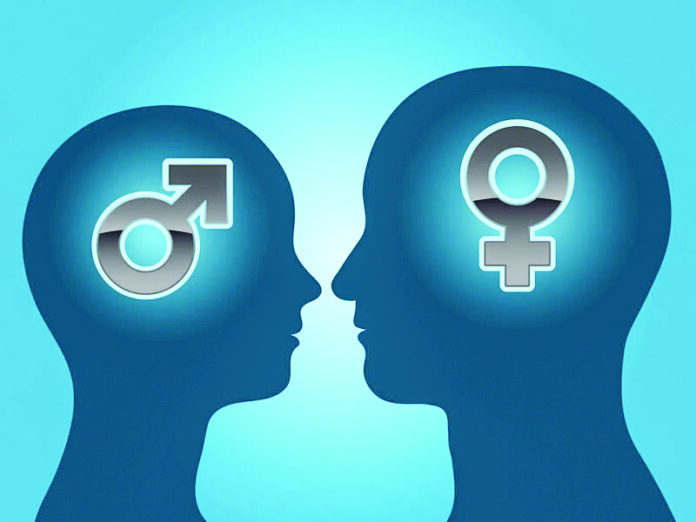There are profound anatomical, physiological, and hormonal differences between women and men to enable childbearing and breastfeeding in women. These differences impact various aspects of health, behaviour, immune responses, incidence of certain diseases, brain development, cognitive function, bone, and joint problems. Women have narrower airways, smaller rib cage, diaphragm, and lung volumes in proportion to their size; hence, they need more breathing effort, particularly during exercise.
GENETIC DIFFERENCES: The SRY gene of the Y chromosome is crucial for sex determination in humans. It acts as a “switch” that triggers the formation of the testes, leading to the development of a male embryo (XY) instead of a female (XX). The Y chromosome has genes essential for sperm production (spermatogenesis) and male health. It may play a role in some autoimmune diseases and cancer development. The Y chromosome has an accelerated rate of mutation and degradative change compared to other chromosomes. Deletions or mutations in specific regions of the Y chromosome (like the Azoospermia factor AZF) can lead to male infertility. A mixup of chromosomes, such as XXY, or some cells that are XY and some that are XX, or a lack of a chromosome XO, leads to intersex. The Y chromosome has a unique evolutionary history, with a non-recombining region (NRY) used to trace paternal lineages (the male Y chromosome is always from the father) and study human evolution.
HORMONAL DIFFERENCES: Both men and women have the same hormones, but in different amounts and patterns. Men produce testosterone, leading to the development of male secondary sexual characteristics like muscle mass, strength, bone density, facial hair, and a deeper voice. Women produce estrogen, leading to the development of female reproductive organs, breast development, wider hips, menstrual cycle, and progesterone that prepares the uterus for pregnancy. Both hormones support a healthy pregnancy. Women also produce small quantities of testosterone, which helps their bone and muscle health. Women experience hormone fluctuations throughout their menstrual cycle, pregnancy, and menopause that affect their physical and mental well-being, while men’s hormone cycles are more continuous and less dramatic. Hormonal imbalances in women manifest as irregular periods, mood changes, or menopause-related symptoms, while in men, low testosterone levels present with decreased libido, erectile dysfunction, fatigue, mood changes, loss of muscle mass, increased body fat, and reduced bone density.
IMMUNE SYSTEM DIFFERENCES: Testosterone may suppress certain immune functions, while estrogens may enhance them. Men are more susceptible to many bacterial and parasitic infections. Women are more likely to develop autoimmune diseases (the body’s immune system mistakenly attacks body tissues) like thyroiditis, Sjogren’s syndrome, Systemic lupus erythematosus (SLE), Multiple Sclerosis (MS), and Rheumatoid Arthritis (RA). These may improve during pregnancy due to hormonal changes required to tolerate and sustain a foetus having half the genetic material (paternal), different from the maternal genetic material. Post-pregnancy, autoimmune diseases worsen, or may appear for the first time, such as postpartum thyroiditis, as hormone levels fluctuate and the immune system re-adjusts.
PSYCHOLOGICAL, BEHAVIORAL DIFFERENCES: Female hormones have a neuroprotective and stress-sensitivity mediating role that confers both psychiatric advantage and disadvantage to women. During the childbearing years, women are comparatively shielded from the more severe psychotic illnesses but are more vulnerable than men to depression and anxiety. Schizophrenia research suggests that estrogens preserve the integrity of neuronal circuits. Estrogen fluctuations during the menstrual cycle, pregnancy, and menopause contribute to mood swings, anxiety, and depression. The cyclical estrogen levels in the brain render women vulnerable to stress, perhaps through glucocorticoid (steroid)-induced neuronal toxicity. Hormones, especially androgens, play a significant role in aggressive behaviour, sexual behaviour, and libido. In alcoholism, the absence of male hormones interferes with liver enzyme elimination of alcohol and, consequently, increases the risk of toxicity in women.
BRAIN HEALTH DIFFERENCES: Headache disorders are more common in women. Sex hormones can influence brain development and cognitive function. In some studies, estrogen plays a role in memory and language, while testosterone is associated with spatial reasoning abilities. Women with low estrogen after menopause or surgical removal of ovaries are disproportionately prone to Alzheimer’s disease, even after adjustment for their longer survival. 30%–50% of women older than 85 years suffer from dementia. Women suffer more severe cognitive impairments than men. Parkinson’s disease occurs 1.5 times more in men than women.
BONE AND JOINT HEALTH DIFFERENCES: Women face many musculoskeletal problems like osteoporosis, arthritis, ankle sprains, and rotator cuff tears beyond the age of 40. Compared to men, their vulnerability is due to hormonal and anatomical differences, such as a wide hip affecting hip and knee alignment and exerting extra stress on these joints. The excess wear and tear of the cartilage lining of the joints predisposes women to early-onset osteoarthritis in the knees and hips. Weaker muscles provide less joint support, increasing the risk of ligament strains and tears. Women in sports suffer Anterior Cruciate Ligament (ACL) tears in the knee joint far more frequently than men due to anatomical differences, such as a narrower intercondylar notch in the knee, greater joint laxity (required in the pelvis for child delivery), and instability. Estrogen helps maintain bone density, and its sudden decline during menopause triggers rapid bone loss and osteoporosis, four times more than in men. These brittle bones are prone to stress fractures and spine compression fractures with back and leg pain, loss of height, and a hunched back. Women are more susceptible to frozen shoulder and rotator cuff injuries. Ankle sprains are more common in women due to lax ligaments. Carpal tunnel syndrome at the wrist, a nerve compression due to fluid retention and myxoedema (a thyroid disorder), is more prevalent in women. High-heeled footwear leads to foot ailments such as Morton’s neuroma, a painful condition affecting the ball of the foot, specifically the area between the toes.
RISK OF OTHER DISEASES: Urinary infections are far more frequent among women due to the proximity of urinary opening (meatus) to the anus. Inguinal hernia is more common in men due to the supply lines to the testes through the inguinal opening. Women experience less cardiovascular disease due to the protective effects of estrogen on the cardiovascular system till menopause. Breast and breastfeeding-related problems like lumps, nipple discharge, cracked nipples, engorged breasts, infection, abscess, galactocele (milk-filled cyst), and dragging pain due to heavy breasts affect women. Men can suffer prominent breasts (Gynaecomastia) and milky fluid discharge from nipples (Galactorrhea). Some types of cancer, like breast (rare in men), ovarian, uterine, cervical, testicular, and prostate cancer, are sex-specific and influenced by hormonal factors. Skin cancers due to greater unprotected exposure to the sun, tobacco-related cancers, and Gout arthritis, caused by uric acid accumulation, are all more common among men. Elder men who smoke, have high blood pressure, and atherosclerosis (hardening of the arteries) are three to five times more likely than women to develop abdominal aortic aneurysms (abnormal enlargement and weakening of the blood vessel supplying the lower half of the body).
INFERTILITY: Approximately one-third of infertility cases are attributed to male factors, another third to female factors, and the remaining third to a combination of both or unexplained causes. Investigating women for infertility is complicated compared to investigating men. Women have a limited number of eggs in their ovaries, and usually one egg gets released during each menstrual cycle, till they get exhausted and menopause sets in. Global female infertility rates have risen significantly more than in men due to delayed childbearing (egg quality and quantity decline with age), early maturity, and menopause. Men keep producing sperm, and hence their fertility lasts late into life. Low testosterone in men and conditions like PCOS in women can lead to infertility. Thyroid disorders, obesity, diabetes, indoor air pollution, and sexually transmitted diseases affect the fertility of women more than men.
Dr. P.S.Venkatesh Rao is a Consultant Endocrine, Breast & Laparoscopic Surgeon, Bengaluru.








